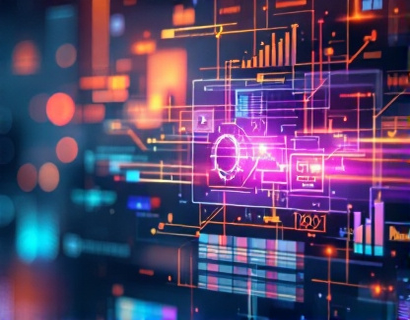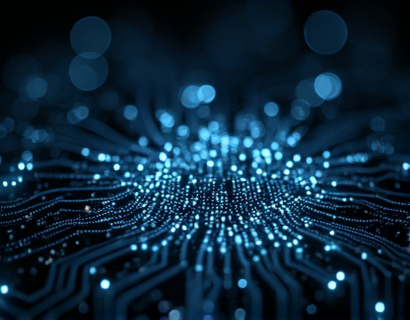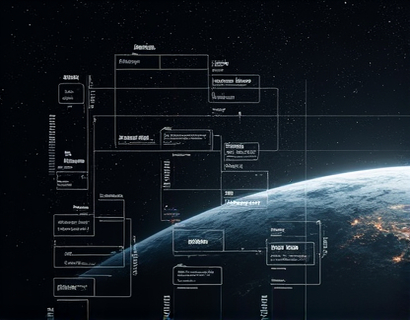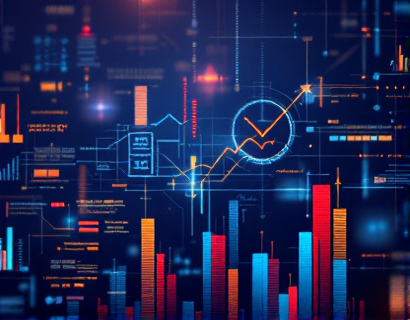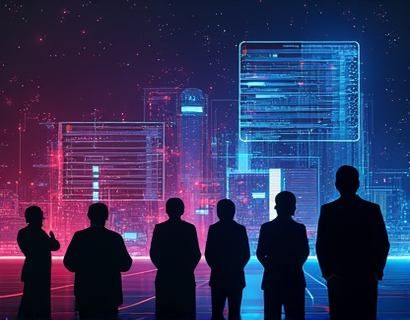Decentralized Productivity Supercharged: Harnessing AI and Crypto for Next-Gen App Solutions
The digital landscape is rapidly evolving, driven by the convergence of artificial intelligence (AI) and cryptocurrency. This fusion is not just a technological curiosity but a transformative force reshaping app innovation and task streamlining for tech professionals and early adopters. The emergence of decentralized applications (dApps) powered by AI and blockchain technology is redefining productivity tools, offering unparalleled efficiency, security, and user control. This article delves into the synergy between AI and cryptocurrency, exploring how these technologies are revolutionizing the way we approach productivity and app development.
The traditional centralized model of software development and application usage is being challenged by decentralized alternatives. Decentralized applications, or dApps, operate on blockchain networks, eliminating the need for intermediaries and central authorities. This decentralization brings several key advantages, including enhanced security, transparency, and resilience. For productivity tools, this means a more reliable and tamper-proof environment where data integrity is maintained without the risk of single points of failure.
AI, on the other hand, brings intelligent automation and advanced analytics to the forefront. When combined with the decentralized infrastructure, AI can process and analyze data across a distributed network, enabling more robust and scalable solutions. This synergy allows for the creation of smart, adaptive applications that can learn from user interactions and improve over time, all while maintaining user privacy and data sovereignty.
Enhanced Security and Data Privacy
One of the most significant benefits of decentralized productivity tools is the enhanced security and data privacy they offer. Traditional centralized systems often become targets for cyberattacks due to their centralized nature, where a single breach can compromise vast amounts of data. In contrast, decentralized systems distribute data across a network of nodes, making it far more difficult for attackers to gain access to sensitive information.
Blockchain technology ensures that data transactions are immutable and transparent, providing a tamper-proof record of all activities. This level of security is particularly crucial for productivity tools that handle confidential business data, financial transactions, and personal information. Users can trust that their data is secure and that their privacy is respected, without the need to rely on third-party intermediaries to manage and protect their information.
Improved Efficiency and Automation
The integration of AI into decentralized productivity tools significantly boosts efficiency and automation capabilities. AI algorithms can automate routine tasks, analyze large datasets, and provide actionable insights, all in real-time. For instance, AI-powered virtual assistants within decentralized applications can manage schedules, prioritize tasks, and even predict user needs based on historical data and patterns.
Smart contracts, a core feature of blockchain technology, can automate complex workflows and business processes. These self-executing contracts with the terms directly written into code can trigger actions when predefined conditions are met, eliminating the need for manual intervention. This not only speeds up processes but also reduces the potential for human error, ensuring that tasks are completed accurately and promptly.
User-Centric Design and Personalization
Decentralized productivity tools are designed with the user at the center, offering a high degree of customization and personalization. AI-driven analytics can gather and process user data to create tailored experiences that adapt to individual preferences and work styles. This personalization extends to interface design, task management, and even the types of applications and services recommended to the user.
For example, a decentralized productivity platform might use AI to analyze a user's workflow and suggest optimized task sequences, recommend relevant tools and resources, and even integrate with other decentralized services seamlessly. This level of personalization not only enhances user satisfaction but also increases productivity by reducing the time spent on manual adjustments and settings.
Interoperability and Ecosystem Integration
One of the strengths of decentralized platforms is their interoperability. Unlike traditional centralized systems that often operate in silos, decentralized applications can easily integrate with other blockchain-based services and traditional systems. This interoperability allows for a seamless flow of data and functions across different platforms, creating a more cohesive and efficient ecosystem.
For productivity tools, this means users can access a wide range of services and applications without the need for multiple accounts or complex integrations. AI can facilitate this by intelligently connecting relevant tools and services based on the user's current tasks and needs, streamlining the workflow and enhancing overall productivity.
Economic Incentives and Tokenization
The use of cryptocurrency in decentralized productivity tools introduces new economic incentives that can motivate users and developers alike. Tokenization, the process of representing assets or utilities as digital tokens on a blockchain, can be used to reward users for contributing value to the network. For instance, users who provide computational power, data, or other resources can earn tokens that can be used within the ecosystem or traded on external markets.
This token-based economy creates a self-sustaining model where the network's growth and utility directly benefit its participants. Developers are incentivized to build high-quality, useful applications, while users are motivated to engage actively and contribute to the ecosystem's success. This alignment of interests fosters a vibrant and dynamic community focused on innovation and mutual benefit.
Challenges and Considerations
While the potential of decentralized productivity tools powered by AI and cryptocurrency is immense, there are several challenges and considerations to keep in mind. One of the primary challenges is the technical complexity involved in building and maintaining decentralized applications. Developers need a solid understanding of blockchain technology, smart contracts, and AI algorithms to create robust and secure solutions.
Another consideration is the user adoption curve. Decentralized technologies are still relatively new and can be daunting for users unfamiliar with blockchain and cryptocurrency concepts. Education and user-friendly interfaces are crucial to overcome this barrier and make decentralized productivity tools accessible to a broader audience.
Scalability is also a significant concern. As the number of users and transactions grows, decentralized networks must be able to handle increased load without compromising performance. Solutions like layer 2 protocols and sharding are being developed to address these scalability issues, but they require further refinement and adoption.
Future Prospects
The future of decentralized productivity tools is bright, with ongoing advancements in AI and blockchain technology paving the way for even more innovative solutions. As the ecosystem matures, we can expect to see more sophisticated AI-driven features, enhanced security measures, and broader interoperability across different platforms.
Moreover, the convergence of AI and cryptocurrency is likely to extend beyond productivity tools, influencing various industries such as finance, healthcare, and supply chain management. The potential for decentralized, intelligent, and secure applications is vast, promising a future where technology serves humanity more effectively and equitably.
In conclusion, the fusion of AI and cryptocurrency is revolutionizing app innovation and productivity tools, offering a decentralized, secure, and efficient alternative to traditional centralized systems. By leveraging these technologies, we can create a more empowering and user-centric digital landscape, where individuals and organizations can thrive in the digital age.










